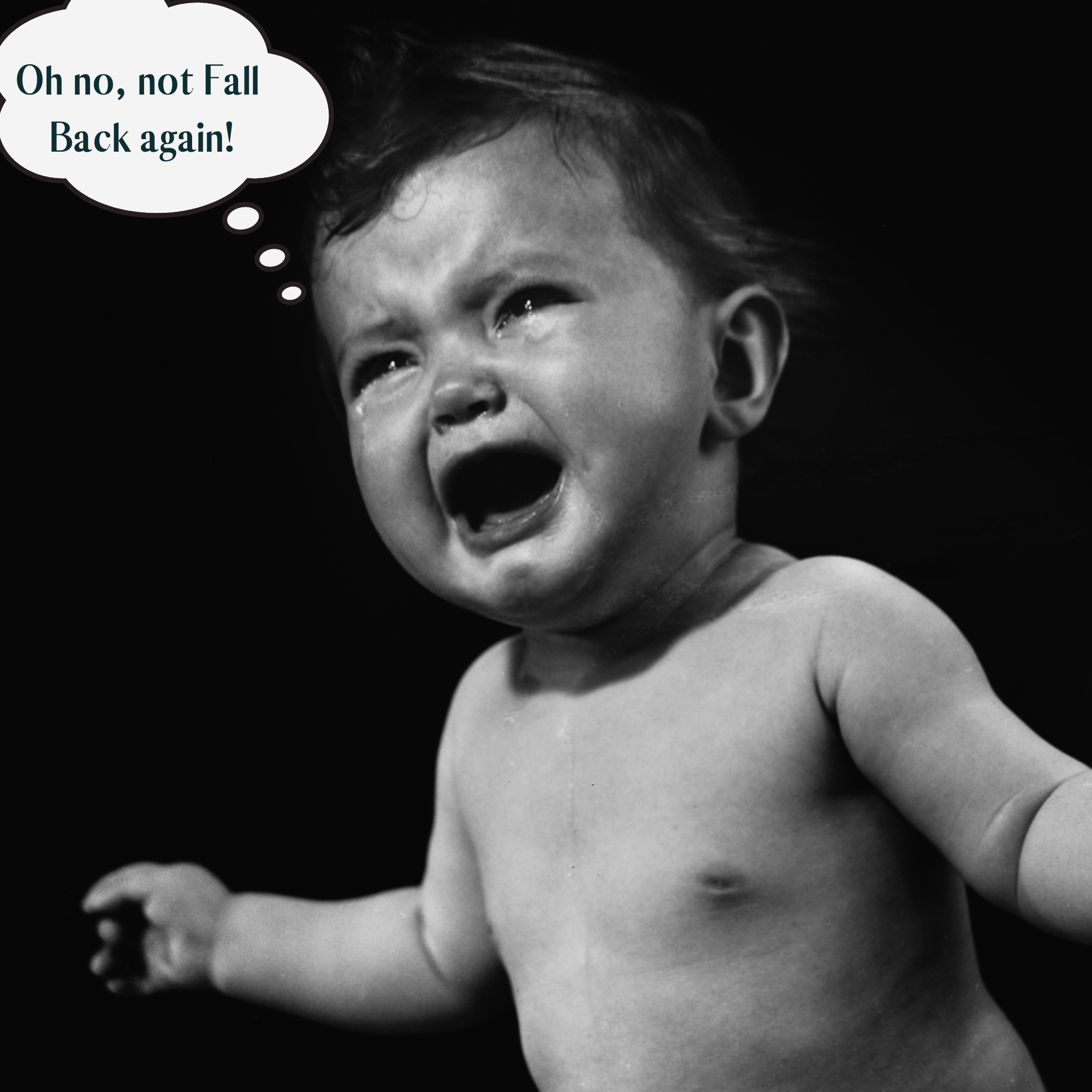How to Prepare for Fall Back 2024: 3 Steps to Shift Schedules Later
Daylight Saving Time Ends on Sunday, November 3rd.
The end of Daylight Saving Time (DST) is upon us, which was abundantly clear as I forced myself out of bed in what felt like the cold, dark depths of the night (it was actually 6:30 AM) and then walked my 9 year old to school in almost darkness. Any parents or commuters out there who can relate?
I am not a fan of daylight saving time (DST) or the equally miserable end to it, which is euphemistically called Fall Back. My personal opinion is that it stinks and screws with my kids’ schedules I’ve worked so hard to maintain. The scientific fact is that it forces us into a time zone change without shifting our internal day-night cycle (circadian rhythm), which can lead to a host of physiological issues, practical annoyances, and even some big health risks. But alas, it is the reality for most of us, so here are my top tips to prevent the obscenely early wake up call on Sunday, November 3rd.
3 Easy Steps to Prepare for Fall Back.
My typical advice regarding the time change is to not sweat it and understand that environmental light and dark exposure, combined with social activities, mealtimes, and daily routines, will work together to get everyone back on track within a week or so. It could be a messy week or two as children adjust, but it won’t result in a brutally early wakeup time forever. But I know that for some of you, the idea of an even earlier wake up is causing an unhealthy spike in blood pressure. Maybe your kid already wakes at 5:30 AM (on good day!), so you can do the math and see how terrifying a 4:30 AM might sound. Fortunately, with a little advance planning, there is a way to prevent the obscenely early wake ups. Here are 3 Tips to keep your baby or child’s schedule on point during the time change:
First and foremost comes acceptance.
Fall back is going to happen and more likely than not your kiddo’s schedule will be a little wonky, and so will yours, and that’s OK. We’re all in this together and will feel better within 5-7 days of the time change — that’s how long he experts say it takes to adapt to the new time — and definitely within two weeks. Stressing about it won’t do you any favors. Just do your best to take care of yourself and consider kicking the TV and social media habits before bed for a few weeks so that you can ensure higher quality sleep. Quality sleep can make a huge difference in your functioning, even if you get an hour less of it than normal. Or, set up your coffee pot at night so all you have to do is push a button in the morning.
Shift the schedule in 15-minute increments.
Begin shifting your baby or child’s schedule later by 15 minutes, every few days between now and November 3rd. Or, you can shift it 15 minute increments, every day, for the 4 days leading up to the time change. The slower shifts tends to result in less overtiredness, but the 4-day shift works as well.
IMPORTANT: don’t just shift the bedtime later—this is the big mistake that folks make! You need to shift everything. Keep the bedroom dark for 15 minutes longer in the morning, shift all meals and feeding times by 15 minutes, and shift those nap times as well. So, if your kiddo usually wakes up at 6:15AM, aim to keep them in the darkened bedroom until 6:30AM (it’s fine to go in and snuggle with them, just don’t turn on the lights or feed them until 6:30AM). Subsequent meals, naps, and then bedtime should be shifted 15 minutes later as well. Keep shifting the schedule in 15-minute intervals every few days until your child is sleeping an hour later than “normal” on the days leading up to the time change (so you’re shooting for a 7:15AM wake up time in the example provided). Then, on November 3rd, 7:15AM will magically become 6:15AM again when the clocks fall back at 2:00 AM. The sleep period hasn’t moved a bit, but the clocks shifted backward by an hour while you were sleeping.
Be strategic with light exposure.
Keep the house well lit and lights really bright until about 30-45 minutes before bedtime while you are shifting the schedule, to help promote the later bedtime and later morning wake up time.
Beginning on November 3rd, turn on bright lights in the morning when you wake up and go outside, weather permitting, to expose yourselves to morning sunlight. This light exposure will help your internal clocks adjust to the time change and strengthen your circadian rhythm. The light exposure will also give you a mood boost.
Now you are prepared for Fall Back and it will be a breeze!
Feel free to leave your questions in the comments below.
Or, if you would like personalized support through the schedule shift, a 30-minute Q&A with a Sleep Coach could be a great fit.
At Little Dipper Sleep, we deeply understand the importance of quality sleep for individuals of all ages. We have years of experience helping adults, parents, babies, children, and teens discover the healthy sleep they need to thrive. The team at Little Dipper Sleep has developed evidence-based programs and techniques, tailored to your specific needs and preferences, that will help you and your loved ones achieve a peaceful and restful night's sleep. With Little Dipper Sleep, stellar sleep is on the horizon. Let's discover your best sleep together by setting up your free consultation today!
Psst: did you know we now do Perimenopause Sleep Coaching too? This is a largely neglected and misunderstood phase of life that comes with many unique symptoms, insomnia and disrupted sleep, just to name a few. I have personally experienced this misery, worked through it, and am highly motivated to help other folks avoid the suffering (or get out of it ASAP!). Set up your free consultation with me (Liz Harden, MPH, Founder and Lead Sleep Coach) today!


